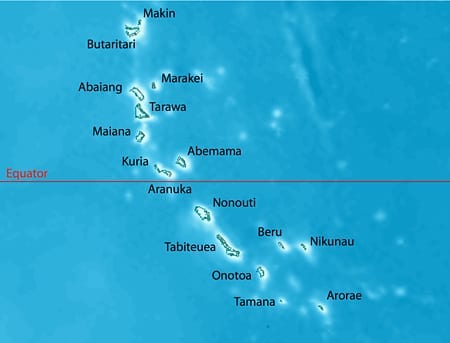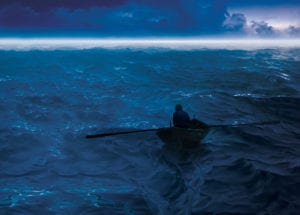By Daniel de la Calle
If we finished the month of May with our classic news, photo and video update I thought it is only fair to also begin June in the same fashion and color. Here they are, a few more news items as we slowly catch up with the latest on the oceans and Ocean Acidification after our adventure in Chile. Enjoyed together with the previous post I believe it makes for some fun minutes of visually striking material peppered with information over the weekend:
≈A recent press release issued by Woods Hole Oceanographic Institution stated that water warming during this century in the equatorial Pacific could create refuges for coral around Gilbert Island chain thanks to the increased upwelling of cold waters rich in nutrients.
“These little islands in the middle of the ocean can counteract global trends and have a big impact on their own future, which I think is a beautiful concept,” said study researcher Kristopher Karnauskas. If predictions by Karnauskas and his colleague Anne Cohen are correct, water temperature increase around the Gilbert Islands will be slower than the average and this will give corals a higher chance to adapt.
Global climate models predict the central tropical Pacific to warm by 5 degrees Fahrenheit (2.8 Celsius) by the year 2100. The researchers used global models in combination with a fine-scale regional model and their results on the low-lying coral atoll islands “suggest that the amount of upwelling will actually increase by about 50 percent around these islands and reduce the rate of warming waters around them by about 1.25 degrees F (0.7 degrees C) per century,” Karnauskas said.
SOURCE
≈I enjoyed doing and posting that test a few days ago, so HERE is another one, from the Christian Science Monitor with the question “Are You Scientifically Literate?”
Not very much, I am afraid, only scored 29 out of 50 🙁
≈One more video on Ocean Acidification to join the now long list: “Ocean Acidification: Connecting Science, Industry, Policy and Public”
≈For as long as I am here Brazil I will try to keep adding news that have to do with the country of samba and the ocean. Today you can read about the magical relationship between fishermen and bottlenose dolphins in the town of Laguna, where these cetaceans act as shepherds to bring mullets into the local’s nets.  For some unexplainable reason one third of the local dolphin population engage in these coordinated fishing activities, with mothers nudging their young towards mullet to maybe teach them how to coordinate fishing tactics. Scientists are trying to find out if this is, as it seems, a learned behavior that is passed on from generation to generation.
For some unexplainable reason one third of the local dolphin population engage in these coordinated fishing activities, with mothers nudging their young towards mullet to maybe teach them how to coordinate fishing tactics. Scientists are trying to find out if this is, as it seems, a learned behavior that is passed on from generation to generation.
SOURCE
SOURCE 2
≈Scientists from Stanford and the University of California may have found an explanation for the Permian Extinction, also called the Great Dying, a period some 250 million years ago where 95% of marine species went extinct. Their study adopted a cellular approach to try to solve the riddle (=what happened within the cells of the animals to finish them off?). Dr. Clapham and Jonathan L. Payne, co-authors of the study conclude that animals with skeletons or shells made of calcium carbonate were more likely to die than those with skeletons of other substances. Also, animals were more apt to disappear if they had few ways to protect their internal chemistry and neither numbers, dispersion throughout the planet, diet or how the creature moved helped against extinction. The authors conclude that animals died from an excess of carbon dioxide and lack of dissolved oxygen in the water, higher water temperatures and a reduced ability to make shells from calcium carbonate. Sound familiar?
Please read on in THIS New York Times article about the probable “perturbation of the carbon cycle,” what they describe as “a huge infusion of carbon into the atmosphere and the ocean” way before hominids began their existence.


